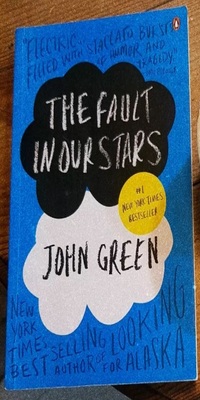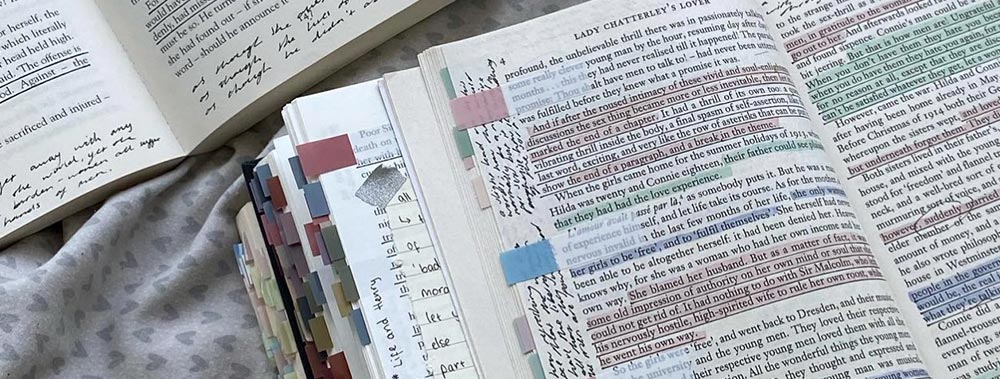The Fault in Our Stars: Summary, Plot, Characters, Literary Analysis & More
“The Fault in Our Stars” is a poignant young adult fiction novel by John Green, first published in 2013. This novel stands as one of John Green’s greatest critical and popular successes.
The story revolves around Hazel Grace Lancaster, a young girl battling thyroid cancer, and Augustus Waters, a cancer survivor, as they navigate the challenges of life, love, and mortality.
Set against the backdrop of Amsterdam and the world of cancer support groups, this love story touches on themes of love, loss, and the transcendent power of human connection, all while exploring the impact of cancer on young lives.

The story revolves around Hazel Grace Lancaster, a young girl battling thyroid cancer, and Augustus Waters, a cancer survivor, as they navigate the challenges of life, love, and mortality.
Table of Contents
Summary The Plot Characters Key Themes Genres Language used Literary devices Summing upThe Plot
This novel follows the journey of Hazel Grace Lancaster, a teenage girl with thyroid cancer, as she navigates the complexities of life and love.
Her life takes an unexpected turn when she meets Augustus Waters, a charming cancer survivor.
Together, they embark on a transformative trip to Amsterdam, where they aim to meet the reclusive author Peter Van Houten, known for his novel “An Imperial Affliction.”
Along the way, Hazel and Augustus confront their own mortality and discover the power of love amidst the backdrop of Anne Frank’s house. Augustus’s surprising actions profoundly impact Hazel’s life.
Characters
In John Green’s “The Fault in Our Stars,” a group of young individuals, each touched by cancer in their own way, navigate the complexities of life and love.
Their shared experiences, hopes, and fears form the emotional core of the story.
Hazel Grace Lancaster
Hazel is the heart of the story, a young girl living with thyroid cancer. Her strength, intelligence, and love for the novel “An Imperial Affliction” define her character.
She embarks on a life-changing journey with Augustus Waters.
Augustus Waters
Augustus, a cancer survivor, is witty and charming. His love for Hazel, philosophical pondering, and surprising actions shape the narrative. He seeks meaning and leaves an indelible mark on Hazel’s life.
Peter Van Houten
The enigmatic author of “An Imperial Affliction” becomes a mysterious figure throughout the book. His eccentric behavior and eventual meeting with Hazel and Augustus are pivotal moments.
Anne Frank’s House
Not a full character but an important symbol of resilience and human connection, Anne Frank’s house serves as a backdrop for Hazel and Augustus’s transformative journey and emotional exploration.
Van Houten’s Assistant Lidewij
Lidewij plays a vital role in facilitating Hazel and Augustus’s meeting with Peter Van Houten, highlighting her importance in their quest for answers and understanding.
Isaac
A friend of Hazel and Augustus, Isaac faces his own challenges with cancer and is an essential character in the story, adding depth to their support group dynamics.
Key Themes
In “The Fault in Our Stars” by John Green, a rich tapestry of themes weaves throughout the narrative, providing depth and emotional resonance. These themes include:
Love and Loss
The novel explores the profound and often bittersweet nature of love, juxtaposed with the inevitability of loss, as Hazel and Augustus’s romance blossoms amidst their battles with cancer.
Mortality and Existentialism
Hazel and Augustus grapple with existential questions about life’s meaning and their place in the world, raising thought-provoking inquiries about the human condition.
Resilience and Hope
The characters exemplify resilience in the face of adversity, demonstrating the enduring power of hope, even when confronted with life’s harshest realities.
Literature and Imagination
The importance of literature, particularly the fictional novel “An Imperial Affliction,” serves as a catalyst for the characters’ journeys, emphasizing the transformative impact of storytelling.
Friendship and Support
The novel highlights the significance of friendship and support, as Hazel, Augustus, and their friend Isaac navigate the challenges of illness together, forging deep connections.
Identity and Self-Image
The characters confront their self-image and identity, challenging society’s perceptions of illness and disability, and striving to define themselves on their own terms.
Genres in The Fault in Our Stars
The story encompasses various genres, including young adult fiction, romance, and contemporary fiction.
These genres collectively enrich the narrative by providing relatable characters and themes, a heartfelt love story, and a contemporary backdrop, allowing readers to connect emotionally with the characters and their struggles.
Young Adult Fiction
As a young adult fiction novel, it resonates with the struggles, emotions, and experiences of teenage characters like Hazel and Augustus.
This genre allows readers to connect deeply with the protagonists, making the story relatable and impactful.
Romance
At its core, the novel is a poignant romance, depicting the passionate and heartwarming relationship between Hazel and Augustus. Their love story adds a layer of emotional depth to the narrative, driving the plot and evoking powerful emotions in readers.
Coming-of-Age
The novel explores the coming-of-age theme as Hazel and Augustus confront the challenges of illness, mortality, and the complexities of love, ultimately growing and maturing as individuals throughout their journey.
This genre underscores their personal growth and transformation.
Contemporary Fiction
Set in the modern world, the novel falls under contemporary fiction, addressing relevant themes such as illness, love, and the pursuit of meaning in a contemporary society.
This genre allows readers to connect the story to their own lives and experiences.
Tragedy
Tragedy is a significant genre element as the characters grapple with life-threatening illnesses and the harsh realities of mortality. The tragic elements of the story lend depth and poignancy to the narrative, making it both heartrending and thought-provoking.
Bildungsroman (Coming-of-Age)
“The Fault in Our Stars” is also a bildungsroman, a genre that focuses on the psychological and moral growth of the main characters.
The journey of self-discovery and personal development undertaken by Hazel and Augustus is a central aspect of the story, making it a compelling bildungsroman.
Language used in The Fault in Our Stars
John Green employs a lyrical and emotionally charged writing style in “The Fault in Our Stars.”
Through the characters’ authentic dialogues and Hazel’s introspective narration, he creates an intimate atmosphere that resonates with readers.
The language is infused with humor, wit, and poignant metaphors, effectively conveying the profound emotions and philosophical ponderings of the characters as they grapple with love, loss, and mortality.
Literary devices in The Fault in Our Stars
Green skillfully employs literary devices like metaphors, symbolism, and foreshadowing to enhance the narrative. Hazel’s reference to “An Imperial Affliction” as a metaphor for her own life underscores the thematic depth.
Symbols such as Anne Frank’s house and the literal heart-shaped swing set add layers of meaning. Foreshadowing creates dramatic tension, enriching the emotional impact of pivotal moments.
Similes
In “The Fault in Our Stars,” similes are skillfully employed to deepen the reader’s understanding and engagement. One notable instance is when Augustus surprises Hazel with a romantic gesture, describing it as “like a grenade exploding.”
This simile vividly conveys the intensity and unexpected nature of his actions, emphasizing their impact on Hazel’s life. Such comparisons enrich the emotional resonance of the narrative, making the characters’ experiences and emotions more relatable and immersive for the reader.
Metaphors
John Green skillfully employs metaphors to enrich the narrative. One striking metaphor is when Hazel and Augustus meet Van Houten, whose behavior is likened to a puzzle.
This metaphor emphasizes the enigmatic nature of Van Houten and his role in the story, inviting readers to unravel the mysteries surrounding him. Metaphors such as these serve as literary devices that deepen the story’s complexity and intrigue.
Analogies
Analogies in the novel help readers grasp complex ideas and emotions. For instance, when Hazel answers Hazel’s questions, it’s described as akin to unlocking a treasure chest of understanding.
This analogy underscores the significance of their exchange and how it illuminates the depths of Hazel’s curiosity and Augustus’s willingness to share his inner thoughts.
Analogies serve as bridges that connect readers to the characters’ inner worlds and experiences.
Imagery
The vivid imagery in “The Fault in Our Stars” creates sensory experiences for readers, immersing them in the story’s emotional landscape. The depiction of the Anne Frank House, with its evocative details, transports readers to this historic setting, enhancing their connection to the characters’ journey.
Augustus’s revelations are painted with rich imagery, allowing readers to feel the weight of his words. Imagery paints a vibrant canvas that amplifies the novel’s emotional impact.
Personification
Instances of personification in the book breathe life into characters and settings. Hazel’s mother and all her actions personify her maternal care and concern for Hazel, adding depth to their relationship.
As the story progresses, Hazel’s own mortality is personified, making it a palpable presence in her life. Personification enriches character dynamics and intensifies the emotional connection readers have with the story’s themes of love and loss.
Hyperbole
In “The Fault in Our Stars,” hyperbole is employed to emphasize the intensity of emotions and character interactions.
When Van Houten refuses to answer Hazel’s questions, his stubbornness is depicted with hyperbolic exaggeration. This serves to underscore the frustration and disappointment Hazel feels, making the reader share in her emotional turmoil.
Irony
John Green utilizes various forms of irony in the novel. Dramatic irony is evident when Augustus reveals his feelings to Hazel, and later, when Hazel dies, despite his prior belief that he would die first.
This dramatic irony creates a poignant contrast between the characters’ expectations and the eventual reality, adding depth and emotional impact to the narrative.
Juxtaposition
In “The Fault in Our Stars,” juxtaposition is deftly employed to accentuate contrasts. When Augustus dies, amidst the backdrop of a burgeoning romance, serves as a striking example.
This juxtaposition intensifies the emotional impact, underscoring the fragility of life and the unpredictability of love, prompting readers to contemplate the complexities of existence.
Paradox
The paradox of Van Houten’s behavior lies in his role as both the author of a deeply empathetic novel and his own dispassionate, enigmatic persona. This paradox invites readers to question the relationship between art and artist, exploring how one can create such profound work yet remain emotionally distant.
Allusion
A subtle allusion in the novel connects Hazel’s suffering to broader themes of human pain and endurance. Her struggles allude to the universal human experience of suffering, allowing readers to relate her personal trials to the broader human condition and themes of love, mortality, and resilience.
Ekphrasis
“The Fault in Our Stars” includes moments of ekphrasis, notably when Hazel and Augustus visit the Anne Frank House. The vivid description of Anne’s wall covered in postcards transforms the physical space into a work of art, enhancing the narrative’s emotional depth.
The Use of Dialogue
Dialogue in the novel serves as a conduit for character development, conveying the wit and intelligence of characters like Hazel and Augustus. It also fosters thematic exploration, allowing the characters to engage in philosophical conversations about life, love, and mortality.
Wordplay and Puns
Green incorporates subtle wordplay and puns to infuse humor and depth into the narrative. While Augustus’s writing of Hazel’s eulogy is a poignant moment, it also carries a playful irony, adding a layer of complexity to their relationship.
Parallelism
The parallelism between Hazel’s initial reluctance to engage in a romantic relationship and her eventual connection with Augustus underscores her personal growth and transformation throughout the story. This structural device reinforces the novel’s central theme of love’s ability to transcend adversity.
The Fault in Our Stars: FAQs
In this section, we provide answers to common questions relating to the story, delving into the depths of this beloved novel’s characters, themes, and more.
What are the main points of fault in our stars?
“The Fault in Our Stars” centers around Hazel Grace Lancaster, a cancer patient, and her relationship with Augustus Waters. It explores themes of love, mortality, and the impact of illness on young lives.
What happens at the end of The Fault in Our Stars summary?
In the end, Augustus dies, leaving Hazel to grapple with her grief and the lessons learned from their love. Hazel also receives a letter from Augustus’s friend, revealing his admiration for her.
Is The Fault in Our Stars a sad ending?
Yes, the ending is bittersweet and melancholic, as it deals with the inevitable loss of Augustus. However, it also celebrates the profound love shared by the two main characters.
Did Hazel get pregnant in The Fault in Our Stars?
No, Hazel does not get pregnant in “The Fault in Our Stars.” The novel primarily focuses on their emotional journey, rather than pregnancy or parenthood.
Summing up: The Fault in Our Stars: Summary, Plot & More
As you can see from this “The Fault in Our Stars” summary, this work by John Green leaves a profound impact on readers with its exploration of love, mortality, and resilience in the face of adversity.
Through rich language, vivid imagery, and well-crafted characters, it tackles complex themes like suffering and the power of human connection.
The novel’s blend of genres, wordplay, and use of literary devices captivates audiences of all ages, making it a timeless and emotionally resonant story. It reminds us that even in the face of life’s inevitable faults, the stars of love and hope can shine brilliantly.
Other Notable Works by John Green
If you liked “The Fault In Our Stars”, you may be interested in other works by John Green including:
- “Looking for Alaska“: A coming-of-age story that delves into themes of friendship, love, and self-discovery as it follows the life-changing experiences of a teenager named Miles Halter.
- “Paper Towns“: This novel revolves around a mysterious girl named Margo Roth Spiegelman and the adventures of Quentin Jacobsen as he tries to uncover her secrets.
- “An Abundance of Katherines“: Follows the quirky journey of Colin Singleton, a child prodigy who embarks on a road trip to find a theorem for predicting the outcome of relationships.
- “Will Grayson, Will Grayson” (co-authored with David Levithan): A unique tale of two characters named Will Grayson and the impact of a chance meeting on their lives.
- “Turtles All the Way Down“: Green’s exploration of mental health and anxiety as seen through the eyes of the protagonist, Aza Holmes, as she navigates a mystery and her own inner struggles.
These novels, like “The Fault in Our Stars,” offer engaging storytelling, relatable characters, and thought-provoking themes, making them worth exploring for fans of John Green’s work.







